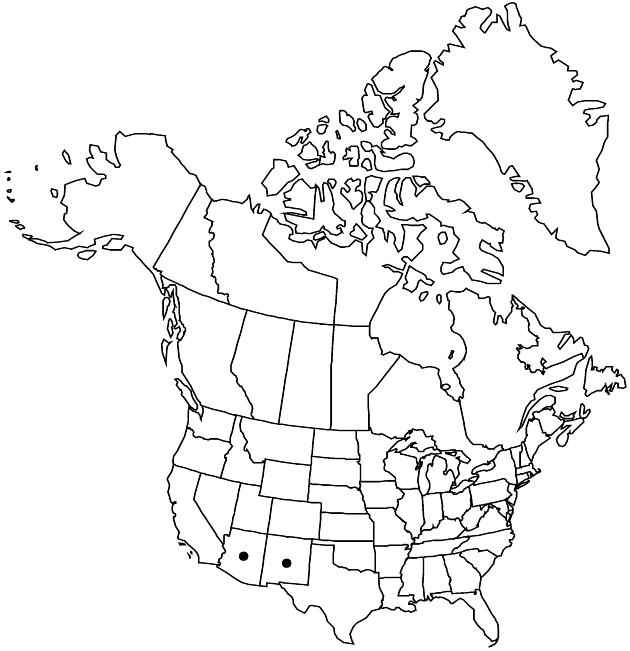Malacothrix sonorae
Madroño 16: 264, fig. 2d. 1962.
Annuals, 10–35 cm. Stems 1 (–9), erect, branched from bases and distally, relatively sparsely leafy, glabrous. Cauline leaves: proximal narrowly oblanceolate to obovate, usually pinnately lobed (lobes oblong to triangular), not fleshy, ultimate margins ± dentate, faces glabrous; distal greatly reduced (margins entire or basally dentate, apices acute). Calyculi of 5–8+, subulate to lanceolate bractlets, hyaline margins 0.05–0.2 mm. Involucres ± campanulate, 6–9 × 4–6.6 mm. Phyllaries 12–15+ in 2 (–3) series, lance-oblong to lance-linear, hyaline margins 0.05–0.2 mm wide, faces glabrous. Receptacles not bristly. Florets 30–61; corollas white or pale-yellow, 6–10+ mm; outer ligules exserted 1–4 mm. Cypselae ± cylindro-fusiform, 1.7–2 mm, ribs ending 0.2–0.3 mm short of apices, ± equal (distal 0.2–0.3 mm of cypselae slightly expanded, smooth); pappi persistent, of 16–18 needlelike teeth plus 2 bristles. Pollen 70–100% 3-porate. 2n = 14.
Phenology: Flowering Mar–May.
Habitat: Sandy, open areas among bushes, Larrea-Lycium-Cercidium-Baccharis associations, Quercus, Pinus, Juglans woodlands
Elevation: 400–1500 m
Distribution

Ariz., N.Mex., Mexico (Sonora)
Discussion
Malacothrix sonorae is found mainly in the Sonoran Desert (Tucson, Kofa, Pinal, White Tank, Baboquivari, and Waterman mountains).
Selected References
None.
Lower Taxa
"fine" is not a number."]" is not declared as a valid unit of measurement for this property.